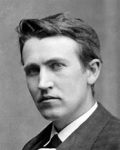It is very difficult to achieve any success without setting goals.
Athletes learn early on in their development that Goal Setting is an important part of their overall training regimen.
Successful business men and women have always maintained that setting goals was a major step in their success, and continue to be as they seek out new ways to challenge themselves.
Despite the fact that most people will tell you that goal setting is a pre-requisite to achieving success, many people do not set goals for the following reasons :
1 There is too much pressure to achieve the goals. If this is the case it is better to set a more achievable goal.
2 Fear of failure. This is the main reason people do not set goals as most people fear failure. If you listen to most successful people, they will tell you that failure is part of the reason for their success, and we should all try to accept failure in this way.
3 They don’t have confidence. One way to gain confidence is to set a simple goal and achieve it. Then set more goals until confidence returns.
4 They are not sure of what they want to accomplish. This may take some time to work out, but the best way to do this is to sit quietly with no distractions and just think of one goal. Personally, I find this very rewarding as creative thoughts start to appear.
5 They don’t know how to set goals. This is valid but I have written articles on this that may help.
None of the above reasons are valid for not setting goals.
Only unrealistic goals apply pressure on an individual.
Fear of failure usually arises from a feeling that we lack control over our future. However, setting long and short-term goals really allow us to control our own futures.
Goals raise confidence levels in that they show you in a concrete way that success is possible.
Achievement of short term goals makes confidence grow and give momentum for greater achievement.
The goal setting process allows people to work out exactly what they want and what is important to them.
Setting goals is not complicated. It can be challenging, but the process of goal setting can be of value to you in building excitement and commitment, which are important factors in achieving success.
General Guidelines For Goal Setting
Goals should be challenging, yet realistic and attainable. Hard but realistic goals produce better results.
Write goals down and post them where you can see them on a daily basis.
Stick them on your computer using post-it’s, or on the bathroom mirror, somewhere you spend a lot of time.
Write your goals as positive statements that focus on success.
Write out an action plan for accomplishing your goals. This is where short term goals come in, each short-term goal achieved, keeps you motivated and confident.
Set a time frame. Be specific but reasonable.
Celebrate! Once you have reached a short-term goal celebrate it, give yourself a reward.
Revise goals when necessary. Sometimes things happen that you cannot control, you must not let that deter you from accomplishing your goals, revise and rewrite.
Prioritize your goals. List your goals in order of importance to you.
Goal setting makes so much sense on so many levels. Whether you are a novice or a “guru” Do not waste another minute, get started today!
Here is a quote by Tony Robbins










